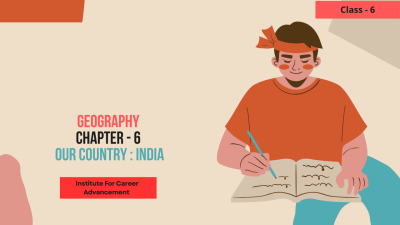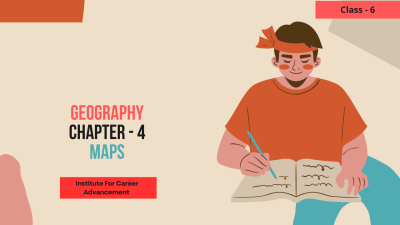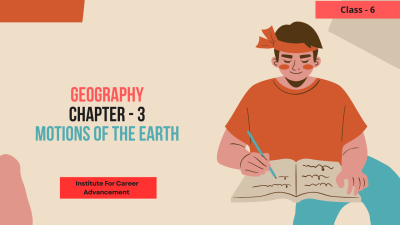Courses


 Compare
Compare
India is a vast and diverse country located in South Asia. It is the world's second-most populous country, with a rich cultural heritage and a long history. Key Features: Geography: India is bordered by Pakistan, Afghanistan, China, Nepal, Bhutan, Bangladesh, Myanmar, and Sri Lanka. It is home to the Himalayas, the world's highest mountain range, and the Ganges River, one of the most sacred rivers in Hinduism. Culture: India is known for its diverse culture, which includes many religions, languages, and traditions. Hinduism, Islam, Sikhism, Christianity, and Buddhism are the major religions practiced in India. History: India has a long and complex history, dating back thousands of years. It has been ruled by various empires and dynasties, including the Mauryan Empire, the Gupta Empire, and the Mughal Empire. Government: India is a federal republic with a parliamentary system of government. The capital of India is New Delhi. India is a country of great contrasts, with both modern cities and rural villages. It is a land of opportunity and challenges, with a population that is both young and vibrant. ভারত দক্ষিণ এশিয়ায় অবস্থিত একটি বিশাল এবং বৈচিত্র্যময় দেশ। এটি একটি সমৃদ্ধ সাংস্কৃতিক ঐতিহ্য এবং দীর্ঘ ইতিহাস সহ বিশ্বের দ্বিতীয় সর্বাধিক জনবহুল দেশ। মূল বৈশিষ্ট্যঃ ভূগোলঃ ভারতের সীমান্তে রয়েছে পাকিস্তান, আফগানিস্তান, চীন, নেপাল, ভুটান, বাংলাদেশ, মায়ানমার এবং শ্রীলঙ্কা। এখানে বিশ্বের সর্বোচ্চ পর্বতমালা হিমালয় এবং হিন্দুধর্মের অন্যতম পবিত্র নদী গঙ্গা নদী রয়েছে। সংস্কৃতিঃ ভারত তার বৈচিত্র্যময় সংস্কৃতির জন্য পরিচিত, যার মধ্যে অনেক ধর্ম, ভাষা এবং ঐতিহ্য রয়েছে। হিন্দু ধর্ম, ইসলাম, শিখ ধর্ম, খ্রিস্টান ধর্ম এবং বৌদ্ধ ধর্ম হল ভারতে প্রচলিত প্রধান ধর্ম। ইতিহাসঃ হাজার হাজার বছর আগের ভারতের একটি দীর্ঘ ও জটিল ইতিহাস রয়েছে। এটি মৌর্য সাম্রাজ্য, গুপ্ত সাম্রাজ্য এবং মুঘল সাম্রাজ্য সহ বিভিন্ন সাম্রাজ্য ও রাজবংশ দ্বারা শাসিত হয়েছে। সরকারঃ ভারত একটি সংসদীয় সরকার ব্যবস্থা সহ একটি যুক্তরাষ্ট্রীয় প্রজাতন্ত্র। ভারতের রাজধানী হল নয়াদিল্লি। আধুনিক শহর এবং গ্রামীণ গ্রাম উভয়ই সহ ভারত একটি দুর্দান্ত বৈপরীত্যের দেশ। এটি তরুণ এবং প্রাণবন্ত উভয় জনসংখ্যার সাথে সুযোগ এবং চ্যালেঞ্জের দেশ।
0 Lessons
Hours

 Compare
Compare
The Earth can be divided into three major domains: Lithosphere: This is the solid, outermost layer of the Earth, consisting of the crust and upper mantle. It is made up of rocks and minerals. Hydrosphere: This is the water-filled part of the Earth, including oceans, seas, lakes, rivers, and groundwater. Atmosphere: This is the gaseous layer that surrounds the Earth. It is composed of nitrogen, oxygen, and other gases. These three domains interact with each other in complex ways to create the conditions that support life on Earth. পৃথিবীকে তিনটি প্রধান অঞ্চলে ভাগ করা যেতে পারেঃ লিথোস্ফিয়ারঃ এটি ভূত্বক এবং উপরের আবরণ নিয়ে গঠিত পৃথিবীর কঠিন, বাইরের স্তর। এটি পাথর এবং খনিজ দ্বারা গঠিত। জলবিদ্যুৎঃ এটি মহাসাগর, সমুদ্র, হ্রদ, নদী এবং ভূগর্ভস্থ জল সহ পৃথিবীর জল-ভরা অংশ। বায়ুমণ্ডলঃ এটি বায়বীয় স্তর যা পৃথিবীকে ঘিরে রেখেছে। এটি নাইট্রোজেন, অক্সিজেন এবং অন্যান্য গ্যাস দ্বারা গঠিত। এই তিনটি ক্ষেত্র জটিল উপায়ে একে অপরের সাথে যোগাযোগ করে এমন পরিস্থিতি তৈরি করে যা পৃথিবীতে জীবনকে সমর্থন করে।
0 Lessons
Hours

 Compare
Compare
Maps are visual representations of the Earth's surface. They are used to show the location of different places, features, and distances between them. Types of Maps: Topographic maps: These maps show the elevation of the land using contour lines. Political maps: These maps show the boundaries of countries, states, and other political divisions. Road maps: These maps show roads, highways, and other transportation routes. Thematic maps: These maps show specific information, such as population density, climate, or economic activity. Key Features of Maps: Legend: A key that explains the symbols and colors used on the map. Scale: A ratio that shows the relationship between the distance on the map and the actual distance on the ground. Compass rose: A symbol that indicates the directions (north, south, east, west) on the map. By studying maps, students can: Locate different places on the Earth Understand the relative distances between places Identify different geographical features (mountains, rivers, oceans) Analyze patterns and trends in data Maps are essential tools for geography, history, and other subjects, providing a visual representation of the world around us. মানচিত্র হল পৃথিবীর পৃষ্ঠের দৃশ্যমান উপস্থাপনা। এগুলি বিভিন্ন স্থান, বৈশিষ্ট্য এবং তাদের মধ্যে দূরত্বের অবস্থান দেখাতে ব্যবহৃত হয়। মানচিত্রের প্রকারঃ টপোগ্রাফিক মানচিত্রঃ এই মানচিত্রগুলি কনট্যুর লাইন ব্যবহার করে জমির উচ্চতা দেখায়। রাজনৈতিক মানচিত্রঃ এই মানচিত্রগুলি দেশ, রাজ্য এবং অন্যান্য রাজনৈতিক বিভাগের সীমানা দেখায়। রাস্তার মানচিত্রঃ এই মানচিত্রে রাস্তা, মহাসড়ক এবং অন্যান্য পরিবহণের পথ দেখানো হয়েছে। বিষয়ভিত্তিক মানচিত্রঃ এই মানচিত্রগুলি জনসংখ্যার ঘনত্ব, জলবায়ু বা অর্থনৈতিক ক্রিয়াকলাপের মতো নির্দিষ্ট তথ্য দেখায়। মানচিত্রের প্রধান বৈশিষ্ট্যঃ কিংবদন্তিঃ একটি চাবি যা মানচিত্রে ব্যবহৃত প্রতীক এবং রঙগুলি ব্যাখ্যা করে। স্কেলঃ একটি অনুপাত যা মানচিত্রে দূরত্ব এবং স্থলভাগের প্রকৃত দূরত্বের মধ্যে সম্পর্ক দেখায়। কম্পাস গোলাপঃ একটি প্রতীক যা মানচিত্রে দিকনির্দেশ (উত্তর, দক্ষিণ, পূর্ব, পশ্চিম) নির্দেশ করে। মানচিত্র অধ্যয়ন করে, শিক্ষার্থীরা করতে পারেঃ পৃথিবীর বিভিন্ন স্থানের অবস্থান নির্ণয় করুন স্থানগুলির মধ্যে আপেক্ষিক দূরত্ব বুঝুন বিভিন্ন ভৌগলিক বৈশিষ্ট্য (পর্বত, নদী, মহাসাগর) চিহ্নিত করুন তথ্যের নিদর্শন এবং প্রবণতা বিশ্লেষণ করুন মানচিত্র ভূগোল, ইতিহাস এবং অন্যান্য বিষয়ের জন্য প্রয়োজনীয় সরঞ্জাম, যা আমাদের চারপাশের বিশ্বের একটি দৃশ্যমান উপস্থাপনা প্রদান করে।
0 Lessons
Hours

 Compare
Compare
The Earth has two primary motions: rotation and revolution. Rotation: This is the spinning of the Earth on its axis. It causes day and night. One complete rotation takes approximately 24 hours. Revolution: This is the Earth's movement around the Sun in a circular path. It takes about 365.25 days to complete one revolution, which we call a year. These two motions together influence various aspects of life on Earth, including: Day and night: The Earth's rotation causes day and night. Seasons: The Earth's tilted axis combined with its revolution around the Sun causes the seasons (spring, summer, autumn, and winter). Time zones: Due to the Earth's rotation, different parts of the Earth experience different times. Understanding the Earth's motions is essential for understanding the patterns of day and night, seasons, and time zones. পৃথিবীর দুটি প্রাথমিক গতি রয়েছেঃ ঘূর্ণন এবং ঘূর্ণন। ঘূর্ণনঃ এটি তার অক্ষের উপর পৃথিবীর ঘূর্ণন। এর কারণ দিন-রাত। একটি সম্পূর্ণ আবর্তনে প্রায় 24 ঘন্টা সময় লাগে। বিপ্লবঃ এটি একটি বৃত্তাকার পথে সূর্যের চারপাশে পৃথিবীর গতি। একটি বিপ্লব সম্পূর্ণ করতে প্রায় 365.25 দিন সময় লাগে, যাকে আমরা এক বছর বলি। এই দুটি গতি একসাথে পৃথিবীর জীবনের বিভিন্ন দিককে প্রভাবিত করে, যার মধ্যে রয়েছেঃ দিন ও রাতঃ পৃথিবীর ঘূর্ণন দিন ও রাতের কারণ। ঋতুঃ সূর্যের চারপাশে ঘূর্ণনের সঙ্গে পৃথিবীর হেলানো অক্ষ মিলে ঋতু সৃষ্টি করে। (spring, summer, autumn, and winter). সময় অঞ্চলঃ পৃথিবীর আবর্তনের কারণে পৃথিবীর বিভিন্ন অংশে বিভিন্ন সময় দেখা যায়। দিন ও রাতের ধরণ, ঋতু এবং সময় অঞ্চলগুলি বোঝার জন্য পৃথিবীর গতিগুলি বোঝা অপরিহার্য।
0 Lessons
Hours

 Compare
Compare
A globe is a three-dimensional model of the Earth. It is a valuable tool for understanding the Earth's shape, size, and location of different places. Latitudes and Longitudes: Latitudes: These are imaginary lines running east-west, parallel to the equator. They measure the distance north or south of the equator. Longitudes: These are imaginary lines running north-south, converging at the North and South Poles. They measure the distance east or west of the Prime Meridian. Key Points: The equator is the latitude line that divides the Earth into the Northern and Southern Hemispheres. The Prime Meridian is the longitude line that divides the Earth into the Eastern and Western Hemispheres. The coordinates of any location on Earth can be determined using its latitude and longitude. By studying latitudes and longitudes on a globe, students can: Understand the Earth's spherical shape Locate different countries and continents Measure distances between places Understand the concept of time zones Explore the relationship between latitude and climate A globe is an essential tool for geography education, providing a visual representation of the Earth and its features. গ্লোব হল পৃথিবীর একটি ত্রিমাত্রিক মডেল। পৃথিবীর আকৃতি, আকার এবং বিভিন্ন স্থানের অবস্থান বোঝার জন্য এটি একটি মূল্যবান হাতিয়ার। অক্ষাংশ ও দ্রাঘিমাংশঃ অক্ষাংশঃ এগুলি বিষুবরেখার সমান্তরালে পূর্ব-পশ্চিমে চলমান কাল্পনিক রেখা। তারা বিষুবরেখার উত্তর বা দক্ষিণে দূরত্ব পরিমাপ করে। দ্রাঘিমাংশঃ এগুলি উত্তর-দক্ষিণে চলমান কাল্পনিক রেখা, যা উত্তর ও দক্ষিণ মেরুতে মিলিত হয়। তারা প্রধান মধ্যরেখার পূর্ব বা পশ্চিমের দূরত্ব পরিমাপ করে। মূল বিষয়গুলোঃ নিরক্ষরেখা হল অক্ষাংশ রেখা যা পৃথিবীকে উত্তর ও দক্ষিণ গোলার্ধে বিভক্ত করে। প্রাইম মেরিডিয়ান হল দ্রাঘিমাংশ রেখা যা পৃথিবীকে পূর্ব ও পশ্চিম গোলার্ধে বিভক্ত করে। পৃথিবীর যে কোনও স্থানের স্থানাঙ্ক তার অক্ষাংশ এবং দ্রাঘিমাংশ ব্যবহার করে নির্ধারণ করা যেতে পারে। একটি গ্লোবের অক্ষাংশ এবং দ্রাঘিমাংশ অধ্যয়ন করে, শিক্ষার্থীরা করতে পারেঃ পৃথিবীর গোলাকার আকৃতি বুঝুন বিভিন্ন দেশ ও মহাদেশের অবস্থান নির্ণয় করুন স্থানগুলির মধ্যে দূরত্ব পরিমাপ করুন সময় অঞ্চলের ধারণাটি বুঝুন অক্ষাংশ এবং জলবায়ুর মধ্যে সম্পর্ক অন্বেষণ করুন ভূগোল শিক্ষার জন্য একটি গ্লোব একটি অপরিহার্য হাতিয়ার, যা পৃথিবী এবং এর বৈশিষ্ট্যগুলির একটি দৃশ্যমান উপস্থাপনা প্রদান করে।
0 Lessons
Hours

 Compare
Compare
The Earth is the third planet from the Sun and the only planet known to support life. It is a terrestrial planet, meaning it has a solid, rocky surface. Here's a short description of the Earth in the Solar System: Orbit: The Earth orbits the Sun once every 365.25 days, which is one Earth year. Its orbit is nearly circular. Size: The Earth is the largest terrestrial planet in the Solar System. It has a diameter of about 12,742 kilometers (7,918 miles). Atmosphere: The Earth has a thick atmosphere composed primarily of nitrogen and oxygen, with trace amounts of other gases. The atmosphere helps to regulate the Earth's temperature and protects it from harmful solar radiation. Water: The Earth is the only planet in the Solar System known to have liquid water on its surface. Water is essential for life and covers about 71% of the Earth's surface. Moon: The Earth has one large natural satellite, the Moon. The Moon orbits the Earth once every 27.3 days. The Earth is a unique planet in many ways, and it is the only known home to life. Scientists continue to study the Earth to learn more about its history, its current state, and its future. পৃথিবী হল সূর্য থেকে তৃতীয় গ্রহ এবং একমাত্র গ্রহ যা জীবনকে সমর্থন করে। এটি একটি স্থলজ গ্রহ, যার অর্থ এটির একটি শক্ত, পাথুরে পৃষ্ঠ রয়েছে। এখানে সৌরজগতের পৃথিবীর একটি সংক্ষিপ্ত বিবরণ রয়েছেঃ কক্ষপথঃ পৃথিবী প্রতি 365.25 দিনে একবার সূর্যকে প্রদক্ষিণ করে, যা এক পৃথিবীর বছর। এর কক্ষপথ প্রায় বৃত্তাকার। আকারঃ সৌরজগতের বৃহত্তম গ্রহ হল পৃথিবী। এর ব্যাস প্রায় 12,742 কিলোমিটার (7,918 মাইল)। বায়ুমণ্ডলঃ পৃথিবীতে একটি ঘন বায়ুমণ্ডল রয়েছে যা প্রাথমিকভাবে নাইট্রোজেন এবং অক্সিজেন দ্বারা গঠিত, অন্যান্য গ্যাসের অল্প পরিমাণ সহ। বায়ুমণ্ডল পৃথিবীর তাপমাত্রা নিয়ন্ত্রণ করতে এবং ক্ষতিকারক সৌর বিকিরণ থেকে রক্ষা করতে সহায়তা করে। জলঃ পৃথিবী হল সৌরজগতের একমাত্র গ্রহ যার পৃষ্ঠে তরল জল রয়েছে। জল জীবনের জন্য অপরিহার্য এবং পৃথিবীর পৃষ্ঠের প্রায় 71% জুড়ে রয়েছে। চাঁদঃ পৃথিবীর একটি বড় প্রাকৃতিক উপগ্রহ রয়েছে, চাঁদ। চাঁদ প্রতি 27.3 দিনে একবার পৃথিবীকে প্রদক্ষিণ করে। পৃথিবী বিভিন্ন দিক থেকে একটি অনন্য গ্রহ, এবং এটি জীবনের একমাত্র পরিচিত আবাসস্থল। বিজ্ঞানীরা পৃথিবীর ইতিহাস, বর্তমান অবস্থা এবং ভবিষ্যৎ সম্পর্কে আরও জানতে পৃথিবী নিয়ে গবেষণা চালিয়ে যাচ্ছেন।
0 Lessons
Hours